How Often Should You Change Your Motorcycle Helmet?
Your motorcycle helmet is your shield on the road, absorbing impact and protecting your head in a crash. But just like any safety gear, motorcycle helmets have a limited lifespan. Knowing how often to change your helmet is crucial for ensuring your safety remains a top priority.
This article will delve into the factors that influence motorcycle helmet lifespan and provide clear guidelines on when it’s time for a replacement. We’ll also explore warning signs that your helmet might need to be replaced sooner than expected.
Understanding Motorcycle Helmet Lifespan: Materials and Degradation
Motorcycle helmets are engineered from a combination of materials, each with its own properties and lifespan. Here’s a breakdown of the key components and how they age:
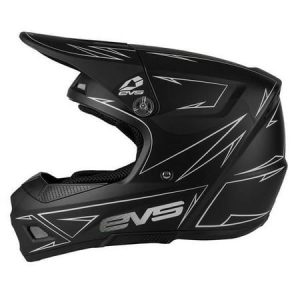
-
Outer Shell: Made from materials like ABS plastic, polycarbonate, fiberglass, or carbon fiber, the outer shell is designed to deflect or absorb impact. Over time, these materials can degrade due to exposure to UV rays, extreme temperatures, and chemicals.
-
Inner Liner: Typically constructed from Expanded Polystyrene (EPS), the inner liner absorbs impact energy by compressing. However, EPS loses its effectiveness as it compresses, reducing its ability to protect your head in a subsequent crash.
-
Comfort Liner: The removable liner keeps your head cool and comfortable. However, frequent washing and exposure to sweat can deteriorate the materials over time.
The 5-Year Rule: A General Guideline
Most helmet manufacturers recommend replacing your helmet every five years from the date of manufacture. This timeframe accounts for the natural degradation of materials under normal riding conditions. However, this is just a general guideline, and several factors can influence your helmet’s actual lifespan.
Beyond Five Years: Factors Affecting Motorcycle Helmet Replacement
Here are some key factors that can shorten the lifespan of your motorcycle helmet, necessitating an earlier replacement:
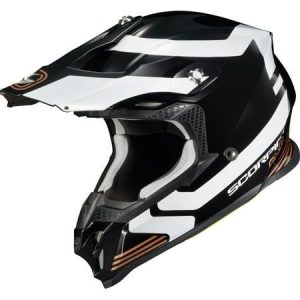
-
Frequency of Use: Helmets used daily will experience more wear and tear compared to those used occasionally. Frequent riders should consider replacing their helmets sooner than the five-year mark.
-
Exposure to Elements: Sun exposure, extreme temperatures, and harsh chemicals can accelerate the degradation of helmet materials. Riders who frequently park their motorcycles in direct sunlight or expose their helmets to harsh cleaning products might need to replace them sooner.
-
Accidents and Impacts: Even minor drops or bumps can compromise the integrity of your helmet’s outer shell and inner liner. If your helmet has been involved in any kind of accident or impact, it’s crucial to replace it immediately, regardless of its age.
-
Visible Signs of Wear: Several visual cues can indicate your helmet needs replacing. These include cracks, deep scratches, excessive wear on the comfort liner, or a loose-fitting shell.
Warning Signs: When to Replace Your Helmet Early
Don’t wait for your helmet to reach the five-year mark if you notice any of these warning signs:
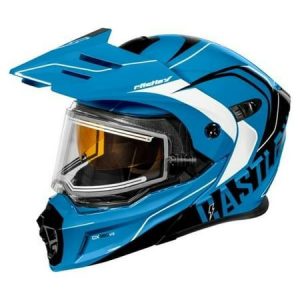
-
Cracks or Deep Scratches: Any cracks or deep gouges in the outer shell compromise its ability to deflect impact. Replace your helmet immediately if you see any such damage.
-
Loose-Fitting Shell: A properly fitting helmet should feel snug but comfortable. If your helmet feels loose or allows excessive movement, it’s no longer providing optimal protection and needs to be replaced.
-
Worn or Damaged Comfort Liner: A worn-out or damaged comfort liner can become uncomfortable and less effective at wicking away sweat. This can lead to an unhealthy environment inside your helmet and potentially contribute to heat stress.
-
Sticky or Brittle Inner Liner: Over time, the EPS liner can become brittle or sticky due to degradation. This indicates a loss of its protective properties and necessitates immediate replacement.
Choosing the Right Replacement Motorcycle Helmet
When it’s time for a new helmet, prioritize safety and comfort. Here are some tips for choosing the right replacement:
-
Consider Your Riding Style: For casual riders, a high-quality ABS or polycarbonate helmet might suffice. Performance riders and frequent travelers might benefit from a lighter and more protective composite or carbon fiber helmet.
-
Focus on Proper Fit: A snug but comfortable fit is crucial. Visit a motorcycle gear store to get professionally fitted for a new helmet.
-
Safety Certifications: Ensure your new helmet meets the safety standards set by your country. Look for certifications like DOT (US Department of Transportation) or ECE (Economic Commission for Europe).
Invest in Your Safety: Don’t Compromise on Your Motorcycle Helmet
Your motorcycle helmet is your most important piece of safety equipment. By understanding helmet lifespan, the factors that influence it, and the warning signs that indicate a replacement is needed, you can ensure your head remains optimally protected on every ride.
Don’t Wait Until It’s Too Late: Schedule a Helmet Check-Up Today!
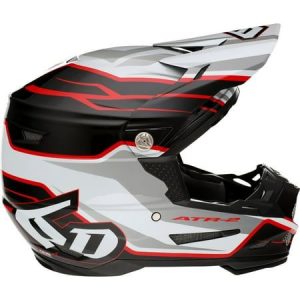
While the five-year rule provides a general guideline, it’s crucial to proactively check your helmet regularly for any signs of wear or damage. Here are some steps you can take:
-
Visual Inspection: Regularly inspect your helmet for cracks, deep scratches, or any signs of deformation in the outer shell.
-
Comfort Liner Check: Examine the comfort liner for signs of wear, excessive sweat buildup, or a loose fit.
-
Movement Test: Try putting on and taking off your helmet. It should feel snug but comfortable, allowing for minimal movement.
-
Consider Professional Inspection: Schedule a professional helmet inspection at a motorcycle gear store every two to three years, especially if you’re a frequent rider.
By incorporating these practices into your routine, you can catch potential issues early and ensure your helmet continues to provide optimal protection.
Taking Care of Your Motorcycle Helmet: Maximizing Lifespan
Proper care and maintenance can extend the lifespan of your motorcycle helmet. Here are some simple tips:
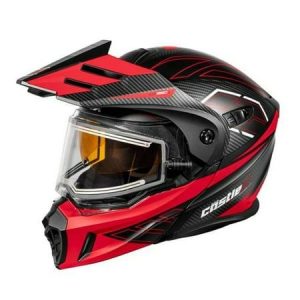
-
Store Your Helmet Properly: When not in use, store your helmet in a cool, dry place away from direct sunlight and extreme temperatures. Avoid storing it under heavy objects that can cause the shell to deform.
-
Cleaning: Clean the outer shell with a mild soap and water solution. Avoid harsh chemicals or abrasive cleaners that can damage the finish.
-
Visor Care: Clean your visor with a microfiber cloth and a visor cleaner specifically designed for motorcycle helmets. Don’t use household cleaners or paper towels, which can scratch the visor.
-
Liner Maintenance: The removable liner should be washed periodically according to the manufacturer’s instructions. This will help keep your helmet fresh and odor-free.
Peace of Mind on Every Ride: Invest in the Right Motorcycle Helmet
Replacing your motorcycle helmet is an investment in your safety. Don’t wait for your current helmet to reach the end of its lifespan or show signs of damage before considering a replacement. By prioritizing safety and understanding the factors that influence helmet lifespan, you can make an informed decision and ensure you’re always equipped with the best possible protection on the road.


